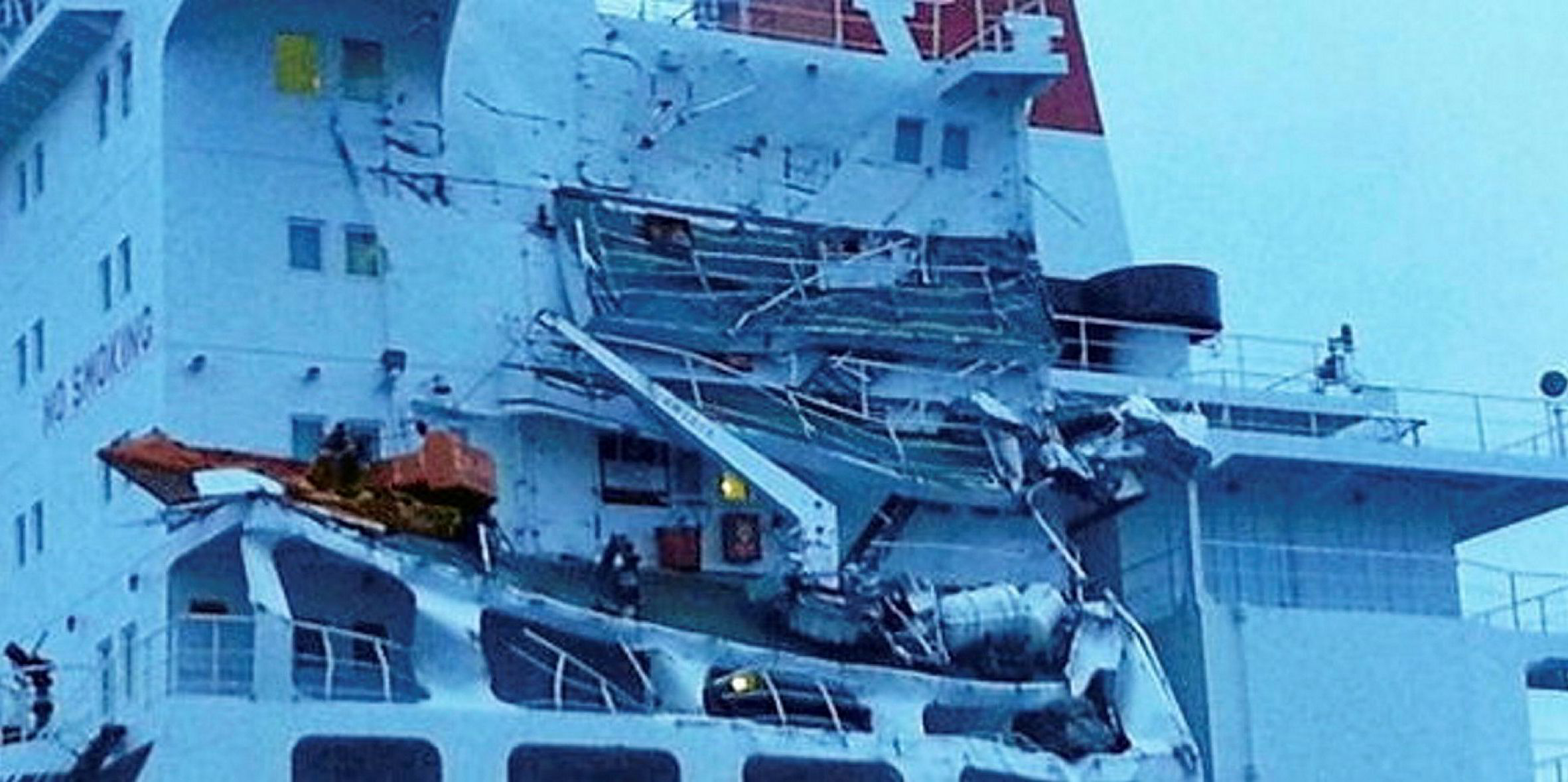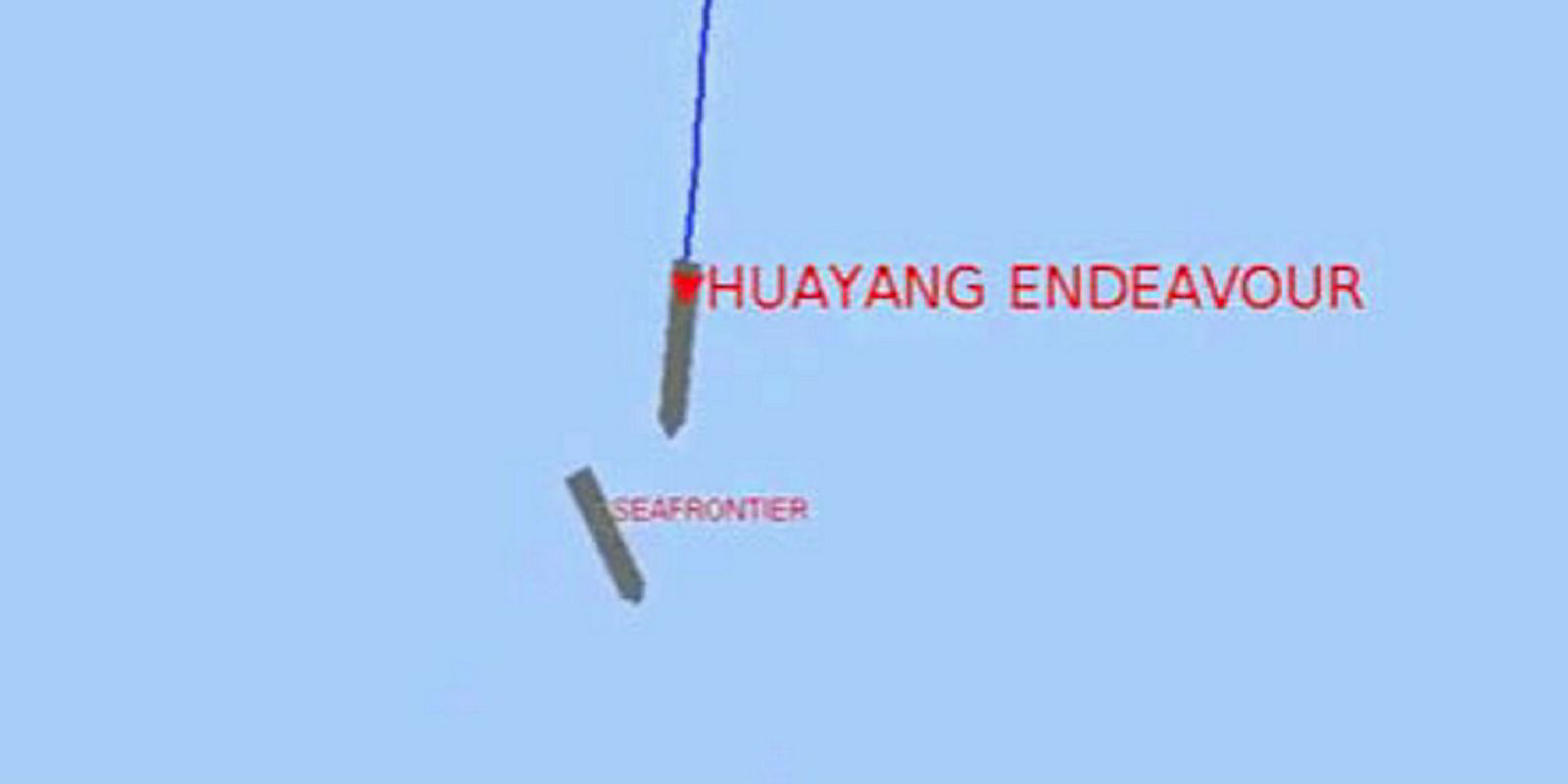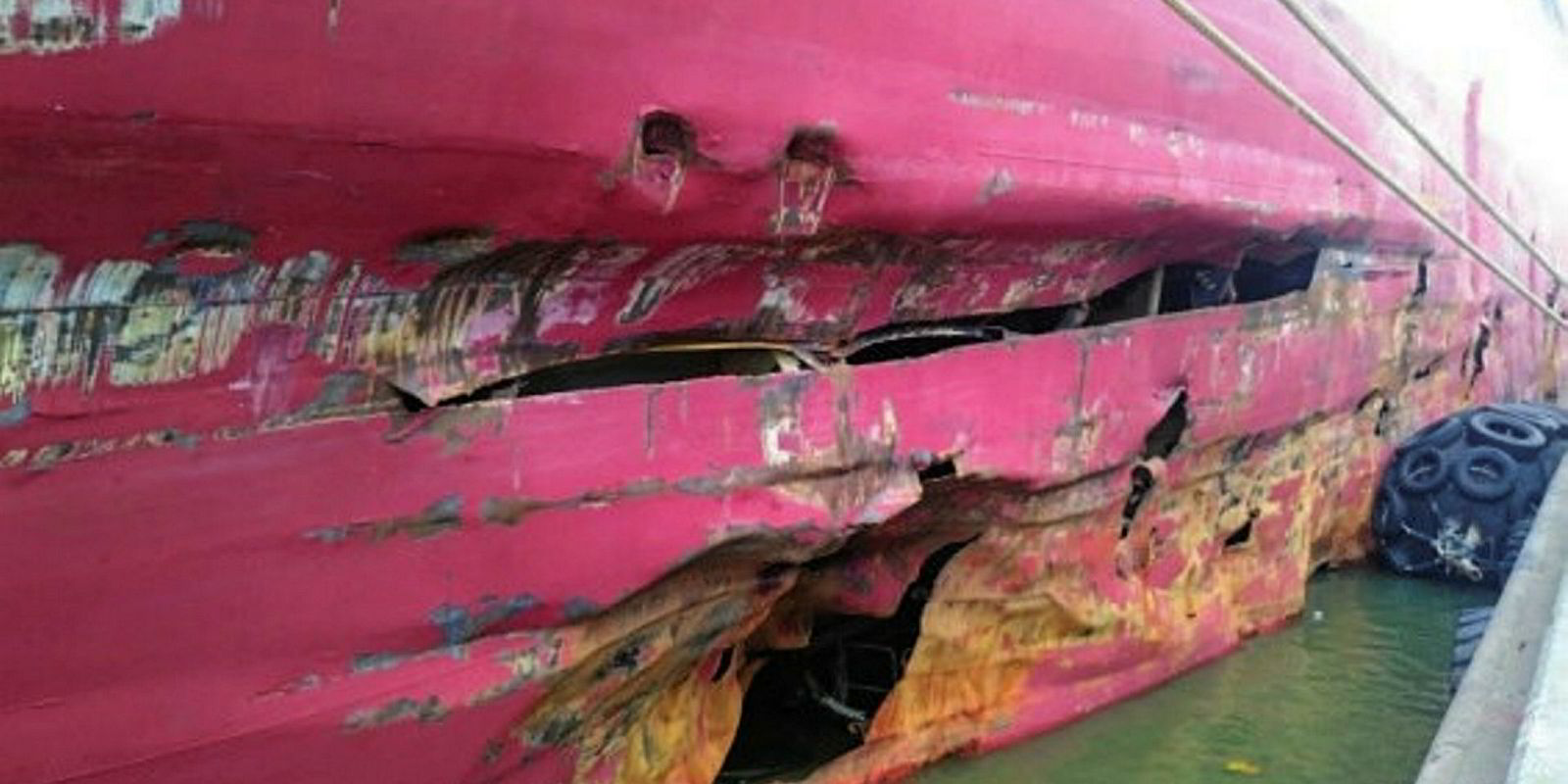A UK accident report has blamed a confusing radio conversation and a tired master for a collision between a tanker and a bulker in the English Channel last year.
Valles Steamship's 48,600-dwt MR Seafrontier (built 2011) and Minsheng Financial Leasing's 75,800-dwt Huayang Endeavour (built 2011) clashed in the early hours of 1 July in the Dover Strait.
Both were damaged in the collision but were able to proceed to nearby ports for damage assessment.
The Marine Accident Investigation Branch (MAIB) found that a VHF radio conversation between the two vessels had resulted in the two bridge teams holding conflicting views as to what had been agreed regarding Huayang Endeavour overtaking Seafrontier.
Seafrontier’s bridge team did not then check for sea room astern before altering course, leading to a close quarters situation.
"In addition, Seafrontier’s master had been present on the bridge for over 14 hours and was probably suffering from fatigue, which was likely to have had an adverse effect on his decision making," MAIB added.
The report said Seafrontier’s bridge team commenced a hard alteration to port without checking for sea room on the assumption that Huayang Endeavour was passing them to starboard.
When Seafrontier altered to port, Huayang Endeavour’s master was unsure what action to take as he believed that he had agreed to overtake on Seafrontier’s port side.
His confusion ultimately led to him making alterations of course and speed that led to the collision.
"Is very dangerous"
The following conversation was recorded (in English) between the bridges before the accident:
Huayang Endeavour (HE): Yah, Seafrontier, Seafrontier. Huayang Endeavour, Huayang Endeavour call me back
Seafrontier (S): … This is ..go ahead, go ahead
HE: Yah, err Seafrontier, what is your intention?
S: I should ask you what is your intention, you are overtaking me and not keeping me clear - what is your intention?
HE: Yah, I will overtake you on your starboard side, starboard side okay?
S: Alter your course to starboard side, I have a vessel on my port side, I cannot alter so much on my port side. I am giving some few degrees to my port side, I will give you some 4-5 degrees clearance but I cannot alter too much on my port side okay?
HE: Yeah, err port overtake is so near, so near. Is very dangerous
S: No, you have to keep me clear because you are overtaking me, you can reduce your speed, do you understand?
HE: Yeah okay, thank you, thank you
Huayang Endeavour’s second officer relayed his understanding of the VHF conversation to the master, who had not listened to the call. Speaking in Mandarin, the second officer explained to the master that Seafrontier did not want to be overtaken on its starboard side.
On hearing this, Huayang Endeavour’s master decided to alter to port to pass down Seafrontier’s port side.
No sound signal was made and the changes in heading went unnoticed by Seafrontier’s bridge team.
Seafrontier’s master was concerned that there seemed to be little sea room as both Seafrontier and a third vessel, the 3,500-dwt cargoship Donau Ekspres II (built 2012), were approaching a narrowing turn in the traffic lane.
As a result of the earlier VHF conversation, he thought that Huayang Endeavour would pass down Seafrontier’s starboard side and so decided the best way to increase sea room with Donau Express II would be to take a full turn to port.
No visual check for sea room astern or sound signal was made by Seafrontier’s bridge team.
"Have you made your intentions clear?"
The following exchange then took place between Seafrontier and Dover Coastguard:
S: Yes sir, we are just, err turning our vessel right around for the traffic ahead of us, and we will come back on our course again
Dover Coastguard (DC): Can you explain exactly what are you doing sir? You have traffic coming to the stern of you, coming behind you down the south-west lane
S: Yes sir. We will go astern of the vessel overtaking us
DC: Have you called that vessel? Have you made your intentions clear to him?
S: Yes sir, we will inform him (unintelligible)
Seafrontier’s lookout then decided to check astern for sea room and he went to the port side of the bridge.
He was startled to see that Huayang Endeavour was now on Seafrontier’s port quarter and he could clearly see Huayang Endeavour’s green sidelight, MAIB said.
The AB lookout alerted Seafrontier’s master to the situation just as the second officer questioned the master’s intention to complete a full turn with Huayang Endeavour astern.
Seafrontier’s master was alarmed to see Huayang Endeavour in such close proximity, and reduced the engine to dead slow ahead while ordering the helmsman to stop the swing to port.
The second officer urged the master to take avoiding action by altering course to starboard. Without acknowledging the second officer, the master ordered the helm first to starboard 10 and then hard to starboard.
He also increased the engine telegraph setting to half ahead to speed up the turn. The master then ordered the second officer to use the signalling lamp to alert Huayang Endeavour’s bridge team.
The second officer complied but the light signal was not seen by those on Huayang Endeavour’s bridge.
Huayang Endeavour’s master, who was still visually monitoring Seafrontier, was equally alarmed to see that Seafrontier was altering rapidly to port and across his vessel’s bow. The two vessels were just 655m apart when Seafrontier steadied on to a heading of 172 degrees.
Unsure of what Seafrontier’s master intended to do, Huayang Endeavour’s master ordered the helm hard to starboard. As the distance between the vessels continued to reduce, he changed his mind, first ordering the helm hard to port and then finally hard to starboard.
With the ships at less than two lengths apart, Huayang Endeavour’s master reduced the engine telegraph setting to first slow ahead, then dead slow ahead and stop in quick succession.
Just before impact, Seafrontier’s master changed the engine telegraph setting to dead slow astern.
Seeing that collision was inevitable, the second officer changed the setting to emergency astern five seconds before Huayang Endeavour’s starboard bow struck Seafrontier’s port side in way of the accommodation housing and hull.
The limits of endurance
Seafrontier’s master was present on the bridge from the Antwerp departure until the time of the accident, a period of slightly more than 14 hours, MAIB said.
He was operating at the limit of his permitted working hours at the time of the accident, with the prospect of spending further time on the bridge before his vessel was clear of congested waters.
"Navigating the Dover Strait demands high levels of concentration, especially when crossing traffic lanes at night as Seafrontier was required to do," the report said.
"Furthermore, this was Seafrontier’s master’s first transit of the Dover Strait, a fact that is likely to have added to his mental loading.
"Given these factors, it is considered very likely that the master’s decision making and reaction times were adversely affected at the time of the accident, as indicated by the omission to check for sea room before the alteration of course."
There is no evidence to suggest that the remainder of Seafrontier’s bridge team or Huayang Endeavour’s bridge team were suffering from fatigue in the lead up to the collision.
Radio use inappropriate
"The use of VHF in this case was not appropriate as it did not allow sufficient time for the situation to be resolved when it became apparent that there was no shared plan," MAIB added.
And it said the lack of long-range scanning by Huayang Endeavour’s bridge team led to a late attempt at collision avoidance through VHF communication.
Following its internal investigation, Huayang Maritime Centre, the manager of Huayang Endeavour, has amended its procedures for the use of VHF for collision avoidance, and promulgated the lessons learned from this accident to its fleet.
Valles Steamship, the manager of Seafrontier, has also completed an internal investigation, and has taken a number of steps to train its personnel in bridge and crew resource management, review its procedures, and promulgated the lessons from this accident to its fleet.







